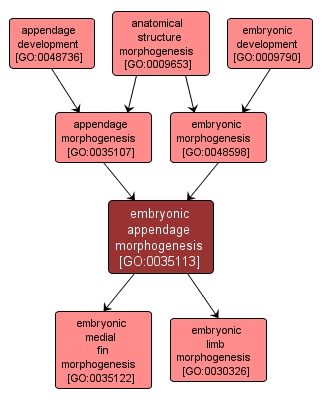| Desc: |
The process, occurring in the embryo, by which the anatomical structures of the appendage are generated and organized. Morphogenesis pertains to the creation of form. An appendage is an organ or part that is attached to the trunk of an organism, such as a limb or a branch. |














